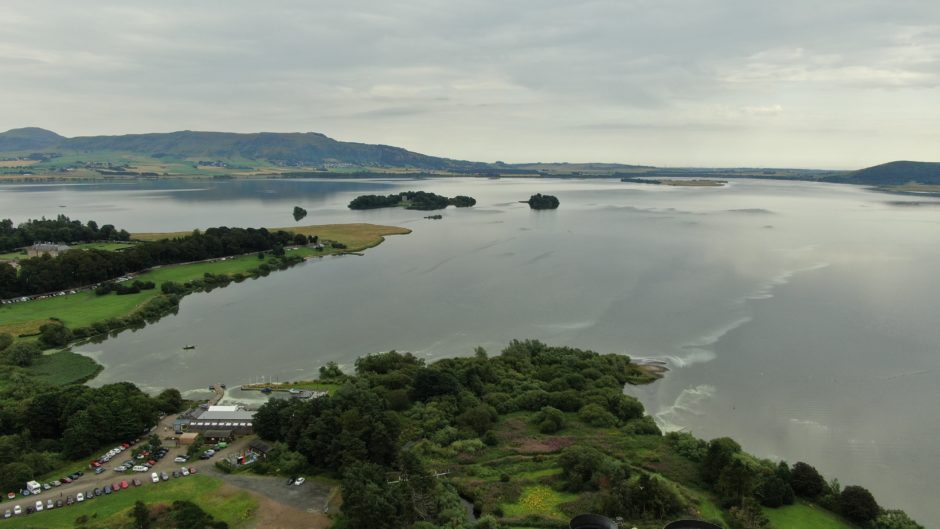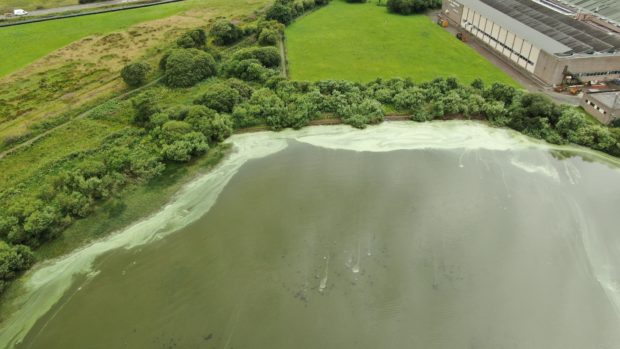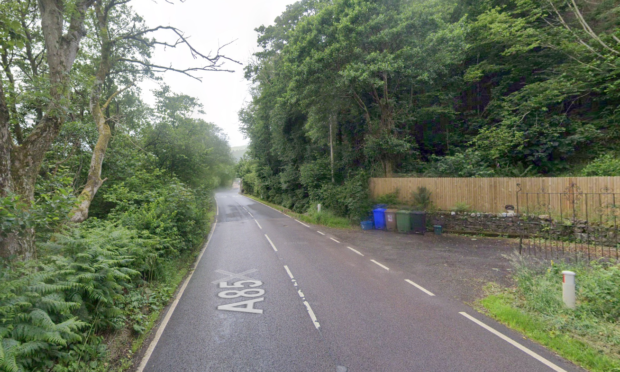Animal experts are warning dog owners to be vigilant due to rising levels of toxic scum in water.
Algae, which is dangerous to animals, is covering the surface of Loch Leven and one local resident is warning pet owners of the risks after she saw one dog stained green by the scum.
He was out taking aerial photographs when he spotted the algae in the loch.
“I never thought anything of it till I was having a cycle round it at the weekend and seen droves of families with animals in the loch,” he said.
“There was actually a wee tan coloured dog that came out green. I don’t think families are fully aware of the danger of it to health.”
Blue green algae blooms may appear as green or greenish-brown scum on the surface of water and can contain toxins that can be harmful for animals if ingested, even in small quantities.
Symptoms include vomiting, diarrhoea, drooling, disorientation, trouble breathing, seizures and blood in faeces. If left untreated, it can cause liver damage and ultimately be fatal.
Scottish Natural Heritage, which has a nature reserve at the loch, said algae is a problem in warm summer weather.

Neil Mitchell, the reserve manager, said: “Together with partners including Perth and Kinross Council, the Centre for Ecology and Hydrology, SEPA and many local stakeholders we’ve been working to improve the water quality at Loch Leven for nearly 30 years.
“While significant improvements have been made, the loch is naturally nutrient rich and prone to occasional algae blooms such as this, particularly during warm summer weather.
“During such incidents signage is posted by the council to alert members of the public and we would encourage visitors to follow any advice given.”
The warning comes as the British Veterinary Association (BVA) said it had received increasing reports of blue green algae in Scotland.
The organisation said the presence of blue green algae has also been confirmed in water bodies Edinburgh and Elgin.
BVA junior vice president Daniella Dos Santos said: “While not all blue green algae are poisonous, it is impossible to tell the difference visually, so it is better to be safe than sorry.
“There is currently no known antidote for the toxins, so prompt veterinary treatment is essential to tackle their effects and ensure a good chance of recovery. If you suspect your dog has been exposed to blue green algae, rush it to your local vet without delay.”










